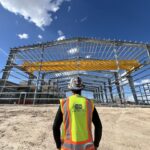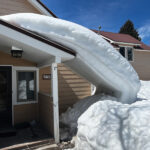
Image courtesy Dodge Construction Network
Total construction starts fell 1 percent in March to a seasonally adjusted annual rate of $16 trillion, according to Dodge Construction Network. Nonresidential building starts fell 9 percent, while nonbuilding starts improved by 7 percent, and residential starts moved 1 percent higher. On a year-to-date basis through March total construction starts were up 13 percent from the first three months of 2023. Residential starts were up 24 percent, while nonbuilding starts gained 16 percent and nonresidential building starts rose 2 percent.
For the 12 months ending in March, total construction starts were up 1 percent from the 12 months ending March 2023. Nonresidential building starts were down 8 percent while residential starts were flat, and nonbuilding starts were up 18 percent on a 12-month rolling sum basis.
Richard Branch, chief economist at Dodge, says, “The construction sector has hit a soft patch to start 2024. However, this should not be overly surprising given high rates and restrictive credit. There are bright spots though as single family starts are moving higher and federal dollars are lifting nonbuilding starts. The recent hot inflation readings likely mean that rate cuts won’t happen until later in the year, and as a result, the commercial and multifamily sectors will continue to languish.”
Nonbuilding construction starts gained 7 percent in March to a seasonally adjusted annual rate of $298 billion. Utility/gas starts more than doubled during the month, while highway and bridge starts moved 19 percent higher. Environmental public works starts fell 24 percent in March and miscellaneous nonbuilding starts lost 42 percent. On a year-to-date basis through March total nonbuilding starts were 16 percent higher. Miscellaneous nonbuilding starts were up 26 percent, environmental public works improved 18 percent, highway and bridge starts rose 15 percent, and utility/gas plants were 6 percent higher on a year-to-date basis through March.
For the 12 months ending in March, total nonbuilding starts were 18 percent higher than the 12 months ending March 2023. Utility/gas starts were up 38 percent, miscellaneous nonbuilding starts rose 18 percent, highway and bridge starts rose 12 percent, and environmental public works starts moved 9 percent higher for the 12 months ending in March.
Nonresidential building starts fell 9 percent in March to a seasonally adjusted annual rate of $363 billion. Manufacturing starts were down 58 percent, while commercial starts fell 1 percent due to a pullback in office and hotel starts. Institutional starts gained 4 percent in March, which was largely the result of some very large healthcare projects getting underway. On a year-to-date basis through March, total nonresidential starts were up 2 percent. Institutional starts were 12 percent higher, while commercial starts were flat, and manufacturing starts lost 15 percent on a year-to-date basis through March.
For the 12 months ending in March, nonresidential building starts were 8 percent lower than the previous 12 months. Manufacturing starts were down 30 percent and commercial starts were down 10 percent, while institutional starts were 7 percent higher for the 12 months ending in March.
Residential building starts moved 1 percent higher in March to a seasonally adjusted annual rate of $400 billion. Single family starts improved 9 percent while multifamily starts lost 14 percent. On a year-to-date basis through three months, total residential starts were 24 percent higher. Single family starts improved 34 percent and multifamily starts were 9 percent higher on a year-to-date basis.
For the 12 months ending in March, residential starts were unchanged from the previous 12 months. Single family starts were 4 percent higher, while multifamily starts were 7 percent lower on a 12-month rolling sum basis.
Regionally, total construction starts in March rose in the South Central and West regionsbut fell elsewhere.






